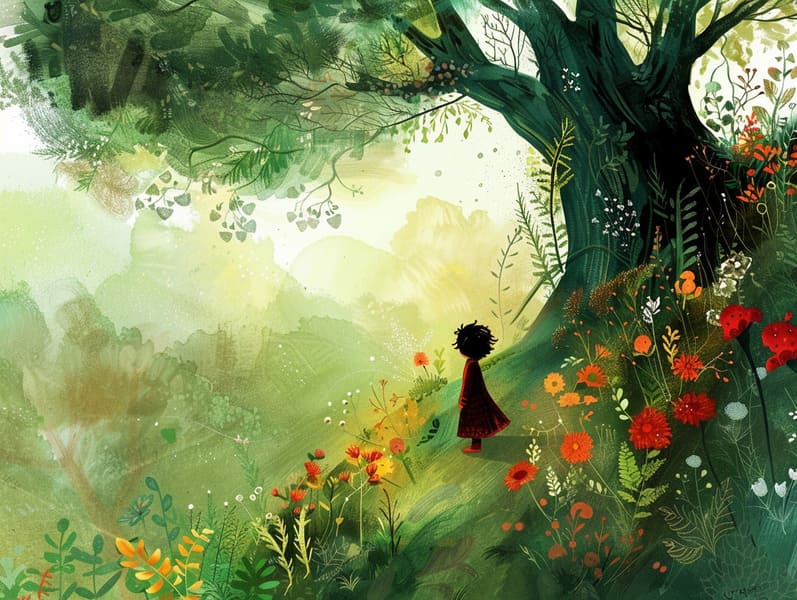The Creation of Legendary Fairy Tales with Its Perpetual Enchantment.
The Creation of Legendary Fairy Tales with Its Perpetual Enchantment.
Blog Article

Children's fairy tales have historical significance. These narratives have been recounted from one generation to the next millennia before they were ever transcribed. They developed from a variety of cultures, including European traditions. They were initially shared among older generations, often carrying themes and messages concerning the societal norms and beliefs of the time.
The Grimm brothers, Jacob and Wilhelm Grimm, were among the first to gather many of these beloved tales. Their anthology, "Grimm's Folk Tales," included tales like "The Story of Cinderella," "Little Brother and Little Sister," and "Snow-White and Rose-Red," which have since become staples in the world of beloved fairy tales. Similarly, Hans Christian Andersen's charming tales, such as "The Mermaid's Tale," and "The Duckling that Could," have floated into hearts worldwide, ensuring their place in the pantheon of beloved fairy tales.
Despite their historical roots, these tales remain as important as ever, especially as nighttime stories for kids. These fantastical tales are now available in multiple formats, including colorful picture books, captivating animations, and digital storybooks.
Their unwavering allure can be linked to several captivating elements:
Valuable Lessons: Old fairy tales often impart important moral lessons. Narratives like "The Shepherd Boy and the Wolf" teach the virtue of truthfulness, while "The Tale of the Tortoise and the Hare" stress the values of resolve and meekness. These tales offer young readers clear distinctions between ethical and unethical, shaping their moral compass in a kind yet lasting way.
Compassion and Knowledge: Ancient fairy tales frequently involve personalities facing problems and hurdles, fostering young listeners to connect with their struggles and support their triumphs. For instance, "Beauty and Her Beast" illustrates the benefit of seeing inner beauty to see the inner spirit of a being, developing empathy and insight.
Cultural Perception: Many classic fairy tales are steeped in the cultural contexts from which they originated. Delving into these narratives can provide intriguing perspectives into different heritages, cultivating a sense of cultural awareness and awareness.
Imagination and Creativity: The supernatural elements in old fairy tales—spells and potions—revitalize children’s dreams. These fairy tales guide readers to enchanted realms, fostering fantasy-filled thoughts and a sense of mystery that remains a lifetime.
Classic fairy tales are not only charming but also edifying. They serve as enchanted tools in fostering various original fairy tales for bedtime mental and emotional abilities in young readers. When timeless fairy tales are told out loud, they develop language acquisition by teaching new language and complicated sentence structures. This practice also improves auditory perception and mental focus, as children focus on every detail, expectant to see what happens next.
Furthermore, talking about the themes and characters of old fairy tales can advance critical thinking and cognitive skills. Children are shown to detect patterns, predict happenings, and figure out cause and effect. These conversations also contribute to young readers verbalize their thoughts and feelings, boosting their emotional intelligence.
In today’s modern era, the abundance of internet fairy tales has made these fairy tales more reachable than ever. Websites and web apps present vast collections of children's fairy tales that can be browsed or played anytime, anywhere. Fairy tales told out loud are particularly common, giving an charming way for children to relish these alluring stories. Voice books and read-to-me stories lead characters and settings to life, often augmented by captivating sound effects and music that amplify the narrative journey.
The timeless fascination of old fairy tales lies in their ability to shift to the present while preserving their central values. Contemporary retellings of these narratives often highlight more diverse protagonists and modern settings, making them relatable to today’s audience. However, the underlying themes of courage, kindheartedness, and justness remain unchanged, continuing to influence listeners of all ages.
Traditional fairy tales also offer a sense of assurance and predictability. They confer a tidy narrative with a recognizable beginning, middle, and end, often wrapping up with the finalization of conflicts and the triumph of rightness over wrongness. This dependability can be solacing for young ones, delivering a sense of unwaveringness in an constantly changing world.
Timeless fairy tales continue to entrance and coach new generations, maintaining their mystique and meaningfulness in modern society. As bedtime stories for kids, they put out a perfect blend of allure and teaching, nurturing moral values, empathy, and creativity. The existence of online storybooks and the likability of fairy tales told out loud promise that these ancient tales remain reachable to new generations.
By sustaining and broadcasting these narratives, we continue to praise the rich tapestry of cultural heritage and cultural heritage. Whether you are accessing a gorgeously illustrated book, delving into a electronic library, or listening on an narrated book, the grandeur of children's fairy tales is always within reach. These fairy tales teach us of the unending essence of narratives and its ability to join us across eras and regions.
If you are experiencing a richly illustrated book, viewing a electronic collection, or listening to an spoken story, the elegance of traditional fairy tales is always within reach.
These narratives convey of the endless effect of fairy tales and its ability to unite us across eras and regions, creating a bond that fascinates and enlightens alike.